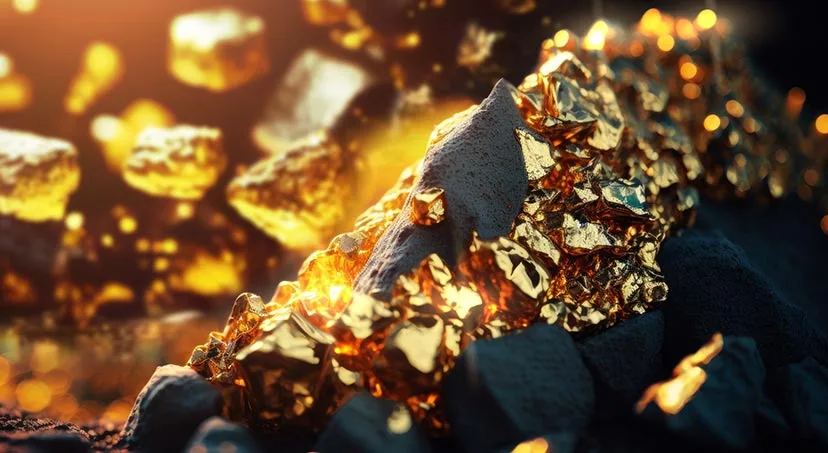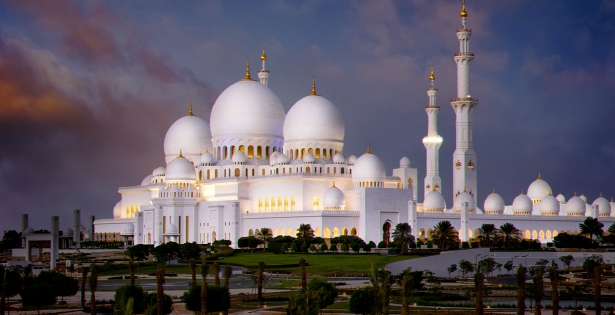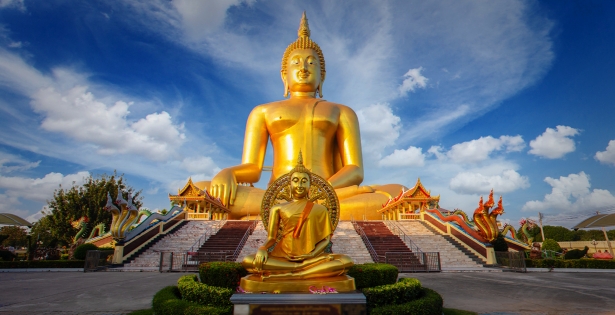
The Golden Pavilion of Kyoto
Kinkaku-ji (which means "The Temple of the Golden Pavilion" in Japanese) is one of the buildings of the religious complex of Rokuon-ji, located in the Japanese city of Kyoto. Since 1994, Kinkaku-ji has been on the UNESCO World Heritage List.
A distinguished feature of the three-story pavilion is its architectural view.
In the photo: the two top floors of the building are covered with gold leaf.
A private residence
The sacred structure of Kinkaku-ji was built in 1397 for the shogun Ashikaga Yoshimitsu who ruled the country from 1368 to 1394 years. He gave the throne to his son and embarked on a path of faith and decided to build a residence resembling a Buddhist temple. He dreamed of a golden palace: the embodiment of paradise on earth. The last years of his life, the shogun lived in this magnificent building, and after the death of Yoshimitsu, the building became a Zen Buddhist temple.
Art doesn’t burn
In the summer of 1950, a young monk student Hayashi Yoken set fire to the Golden Pavilion in his attempt to commit suicide. The young man who lost his mind was saved, but the precious structure was burnt. A few years later the magnificent temple was restored in its original form.
The Kinkaku-ji building, as we know it today, was built in 1955 based on original building sketches and photographs. Gold plates, which covered two floors of the building, made it thicker. The craftsmen were able to restore the elements of the interior and the wall painting. The restoration work completed in 1987.
Luxury and refinement
The craftsmen, who worked on the creation of the Golden Pavilion, managed to combine the Japanese architecture of different epochs. The first floor of the building is designed in an aristocratic style of the period 800-1200 with white walls and wooden pillars. The second floor of the pavilion resembles the residence of a samurai. The third is a cell of monks of the Zen Buddhist temple.
In the photo: the roof of Kinkaku-ji is decorated with the figure of a golden bird — the Japanese phoenix.
Kinkaku-ji is considered a storehouse of Buddha’s relics. A reception hall is on the first floor of the pavilion, surrounded by a veranda overlooking the lake. Here the statues of Buddha Shakyamuni are stored, who is considered the founder of Buddhism.
A music hall, as well as poetry and painting rooms are on the second floor. Its interior is decorated with paintings and works of skillful Japanese calligraphists. Statues like the "Four Heavenly Kings" - Buddhist guardian gods, each of them watches over one cardinal direction of the world.
The third floor has large arched windows, typical of Buddhist architecture of the XIV century. Its interior is covered with gold leaf and is intended for religious ceremonies.
In the photo: the third floor of Kinkaku-ji is made entirely of the precious metal.
The exquisite pavilion is surrounded by a well-groomed garden and Kyokoti lake with crystal-clear water (which means "mirror lake" in Japanese.)
In the photo: The Golden Palace is reflected in the calm surface of the mirror waters of Kyokoti.
The reservoir has several small islands of a fancy shape, where Japanese pines grow, emphasizing the beauty of the local nature. Some trees in the park were planted more than six centuries ago, during the construction of a unique building.
The source of the Ginga-sen (Milky Way), which is considered to have healing powers, is not far from Kinkaku-ji.
The Golden Pavilion is the main attraction of Kyoto. Tens of thousands of tourists from all over the world come here every year.
Read also the article:
The Golden Throne of the Emperors of China




